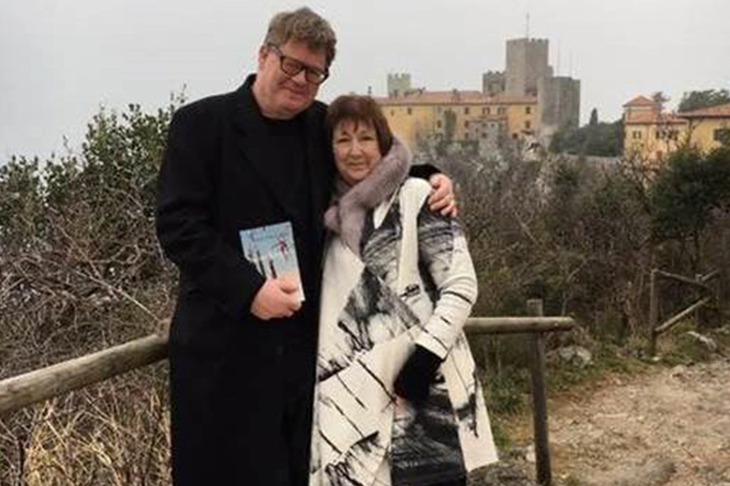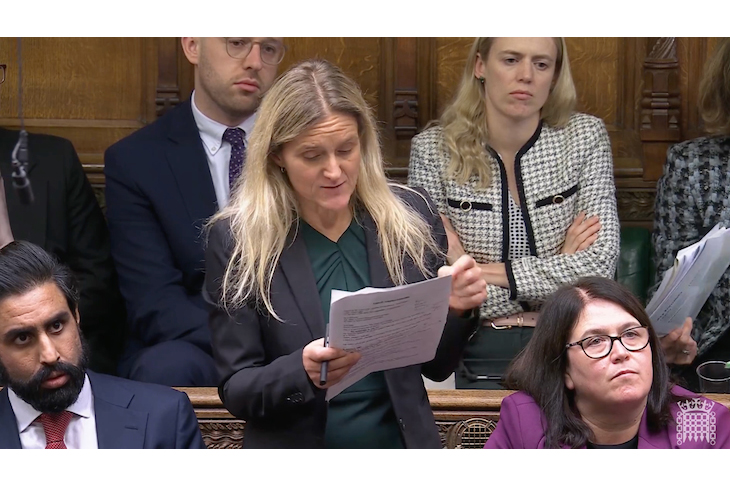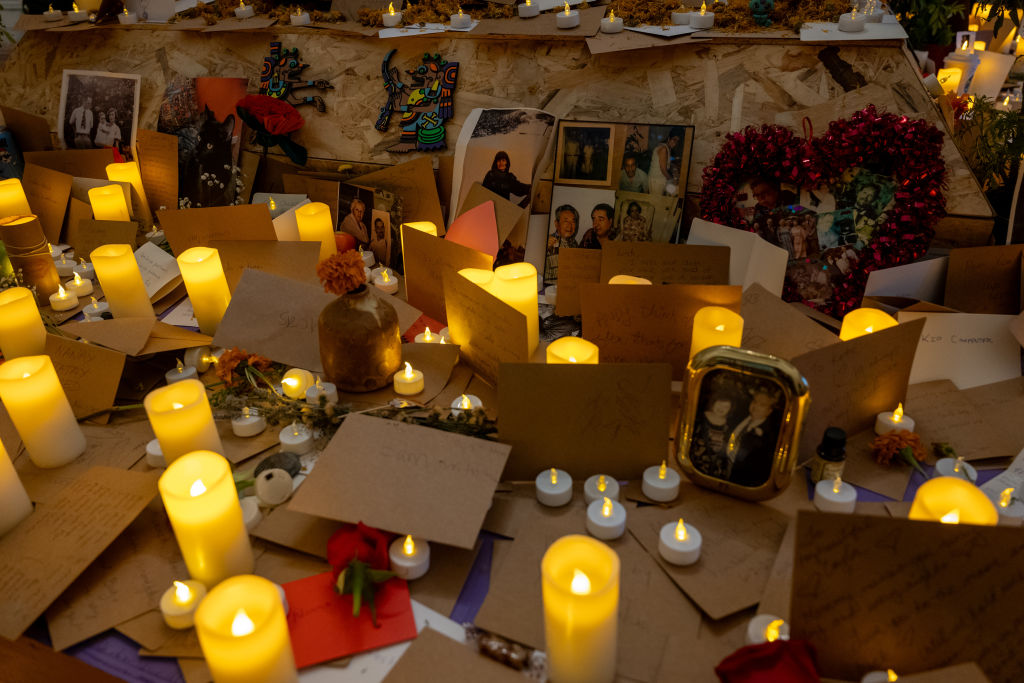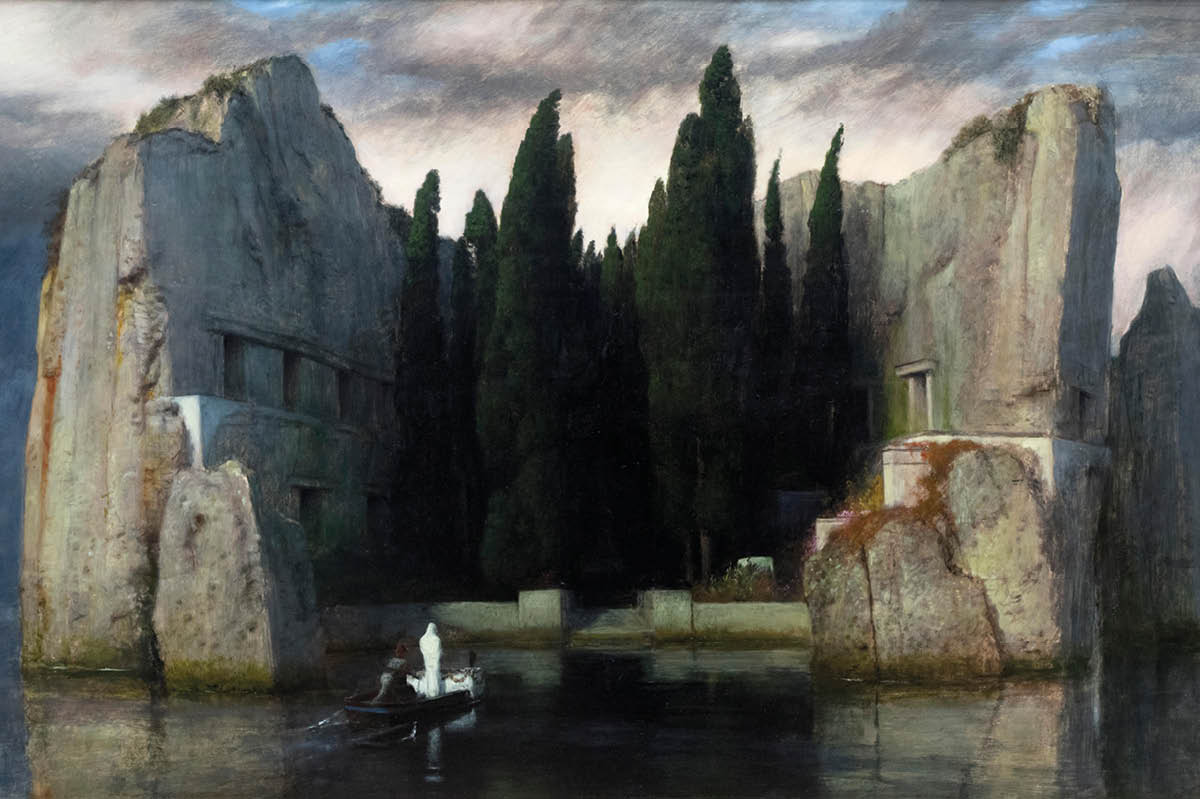Ten years ago, recently graduated and unemployed, I sent my résumé to a raft of radio producers. Just one replied. “Dear Oliver,” wrote Marilyn Imrie, in an email with the subject line “YOU”: “How nice to hear from you and about you.” Her generosity and enthusiasm were writ large in those three capitals, which headed a letter that came festooned with advice, offers of work experience and an anecdote about her adaptation of Samuel Richardson’s Clarissa. It takes skill to shorten one of the longest novels in the language, but then Imrie was a legendary figure in the world of radio. We briefly corresponded but did not meet.
Motor neurone disease runs the following course. The nerves that control muscle movement cease to function, leaving the patient unable to move, talk, swallow and finally breathe. Sufferers die, immobile and mute, their senses and intellect unimpaired. The illness is neither curable nor rare. As James Runcie says, in this both joyous and harrowing account of Imrie’s life and death and their thirty-five-year marriage, the individual lifetime risk is one in 300. The numbers are increasing. It doesn’t help to be Scottish, as Imrie was; the disease, it has been suggested, is 67 percent more prevalent in Scotland than in other countries of northern Europe.
Imrie died in August 2020, aged seventy-two, robbed of the chance to enjoy grandmotherhood, a new house on the coast in Scotland and an old age with her life’s love. Her last months were suffered in the depths of lockdown. One of the book’s many achievements is its description — unsparing, blackly comic — of nursing someone through a disabling and terminal illness in a world of Zoom consultations and social distancing, where nursing videos and ventilator instructions had to be looked up on YouTube.
Runcie, the creator of the Grantchester crime series and myriad plays, novels and documentaries, is too good a writer to settle for fridge-magnet aphorisms about grief. Literature is his guide, Dr. Johnson and David Hume his references for widowerhood, as he puts together what Johnson called “moral instruction in the art of bearing calamities.” The chapters about Imrie’s diagnosis and decline are near unbearable, but have to be borne, not least the rendering of the couple’s final conversation, which was eased into flaying honesty by the cover of night.
Imrie’s death, more peaceful than her long dying, comes on page 90, and is not the main event. Runcie’s chief topics are how he came to live with her, and how he must learn to live without her. Their courtship is done with backlit buoyancy (he bravely shares the rhapsodic silliness of new love, the sexy notes, the jokes and messages), his grief with truthfulness and stoicism.
He is attuned to the practicality of living in, and through, sadness, grounding his prose in the grubby detritus of pain and grief, their dull bureaucracy: what to do with the clothes, how to sleep alone in the bed, how to cook for oneself, a bird with one wing. He writes with the novelist’s eye for detail, alighting on the bicycle clips of the doctor who has pronounced Imrie’s death sentence; the tears of the carers as they leave the house for the final time; and the card of condolence that arrives from the dry-cleaners, hoping he will “see a future laced with hope.” His triumph is that his pragmatic collecting of such fragments for literary use never evinces Graham Greene’s notorious image of creative detachment, the “splinter of ice in the heart of a writer.” This book is an act of thawing, a refusal to freeze.
Runcie trained at drama school, and I imagined Imrie, always his first and most rigorous critic, scribbling wryly in the margins that the theatrical metaphors in his account of her illness are a bit overdone. The son of Robert Runcie, the former Archbishop of Canterbury, James passes quickly through his complex and unresolved relationship with Christianity, even as he marbles his paragraphs with prayer. (Imrie, twelve years his senior, was a divorcee; they could not be married by his father in a church.) And one word never mentioned is euthanasia. The archbishop’s favorite song was Harry Lauder’s “Keep Right on to the End of the Road.” Did Imrie consider leaving early? Runcie quotes Keats — “Is there another life?” — and I wanted to know what he thought was the answer.
But the answer may lie in the existence of this book, an inky rather than celestial immortality, which I read in a single, lump-throated sitting. Runcie’s real subjects are not death or disease, but love, and the object of his love. He tests Tolstoy’s sense of the uniqueness of unhappiness by nudging at the universal through the specifics of his own loss. So he commits his wife to paper, as an artist might: initially a folk singer, she literally sings from the page. She smelled of Rochas’s “Mystère,” wore bright clothes and heavy jewelry; she swore like a trooper and liked to paint flowers in watercolor.
This book is threaded with flowers, from the blowsy canvas of red poppies by Emil Nolde in front of which they fell in love, to the fake blooms on the battered hat of Runcie’s ex-girlfriend, met by chance at a funeral and now looking “like the kind of woman who would get bumped off in the first act of Midsomer Murders.” Imrie adored anemones, because “they die so beautifully.” But every Valentine’s Day, which was also their wedding anniversary, Runcie would give her white tulips in a twist of brown paper. He laid them on her grave, and they are strewn on the dustjacket of this book. Her book. Simply the thing she was makes it live.
This article was originally published in The Spectator’s UK magazine. Subscribe to the World edition here.

























